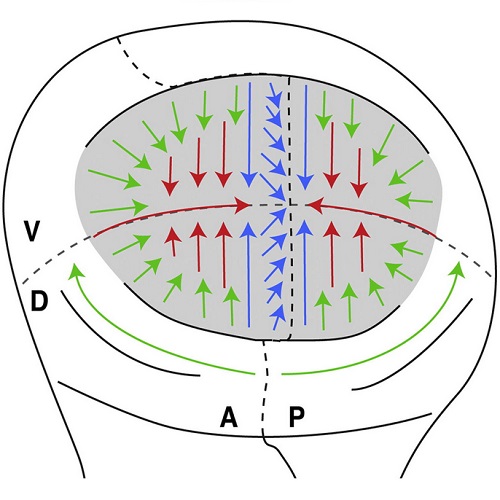Establishment of global patterns of planar polarity during growth of the Drosophila wing epithelium.
Epithelial tissues develop planar polarity that is reflected in the global alignment of hairs and cilia with respect to the tissue axes. The planar cell polarity (PCP) proteins form asymmetric and polarized domains across epithelial junctions that are aligned locally between cells and orient these external structures. Although feedback mechanisms can polarize PCP proteins intracellularly and locally align polarity between cells, how global PCP patterns are specified is not understood. It has been proposed that the graded distribution of a biasing factor could guide long-range PCP. However, we recently identified epithelial morphogenesis as a mechanism that can reorganize global PCP patterns; in the Drosophila pupal wing, oriented cell divisions and rearrangements reorient PCP from a margin-oriented pattern to one that points distally. Here, we use quantitative image analysis to study how PCP patterns first emerge in the wing. PCP appears during larval growth and is spatially oriented through the activities of three organizer regions that control disc growth and patterning. Flattening morphogen gradients emanating from these regions does not reduce intracellular polarity but distorts growth and alters specific features of the PCP pattern. Thus, PCP may be guided by morphogenesis rather than morphogen gradients.

- Curr. Biol. 2012 Jul 24;22(14):1296-301
- 2012
- Developmental Biology
- 22727699
- PubMed
Enabled by:
